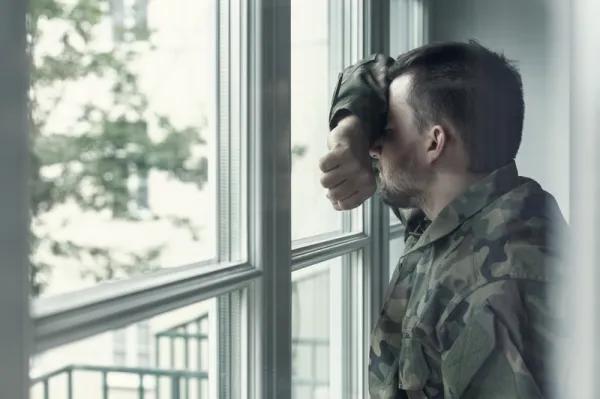
Self-care in the caring professions is an essential requirement. If this does not occur, it is expected that workers will end up burned out and exhausted due to overexertion.
In those professions focused on crisis and emergency care, self-care becomes even more central if possible. When a psychologist, firefighter, police officer or doctor has experienced a highly shocking event during their work day, going home as if nothing had happened is not the best idea. Although it is his job, all these professionals are, above all, people. That is why their knowledge and experience do not immunize them against pain and suffering.
So, In this type of scenario, an intervention known as debriefing is usually carried out which is precisely aimed at promoting the elaboration of what was experienced by the professionals involved in the emergency situation.
In this article we will talk in detail about psychological debriefing, how it is developed and what benefits it provides to participants.
Stress in emergency professionals
Too often, emergency professionals are expected to act like superheroes who can endure anything. However, as we already mentioned a few lines above, above all they are human beings who feel and think. Thus, Coming into contact with the pain of others can stir them up and cause emotional consequences.
Due to all the demands that emergency care work poses, it is logical that professionals may show intense stress reactions.
Among the physiological symptoms associated with this response are fatigue, nausea, chills or difficulty breathing. On an emotional level, the person may appear anxious, fearful, irritable or in a state of shock. Added to this, other signs can also be identified such as difficulties resting and stopping and accelerated and high-pitched speech.
Although we often talk about stress in general terms, Emergency professionals can experience different types of stress:
1. Eustress
This type of stress is one that has a positive connotation. People We need moderate doses of stress to be able to mobilize all our resources in highly demanding situations. Therefore, in emergency professionals this reaction is not only natural, but it is necessary.
2. Dysfunctional stress
This type of stress is negative, and It usually appears as a result of problems in organization, logistics and communication of the team. The group fails in some of its dynamics and this generates additional problems that increase the stress of professionals.
3. Cumulative stress
This type of stress is related to the so-called Burnout Syndrome. The person feels overwhelmed by the demands of their job and lacks support to cope with the pressure. When the individual’s resources are no longer sufficient to satisfy demand, emotional exhaustion appears that translates into exhaustion and the feeling of being burned out at work. This syndrome can be a big problem in caring professions, since it not only demotivates the person, but also makes them more insensitive to the suffering of others.
4. Stress caused by a critical incident
This stress response is the one derived from having intervened in an emergency or catastrophe. That is, it is the emotional reaction that arises after having done work in a certain scenario. This type of stress is the focus of the preventive debriefing technique.
What is psychological debriefing?
Psychological debriefing can be defined as a brief preventive intervention, which is implemented in the moments after experiencing a potentially traumatic event (an accident, a natural disaster…). Generally, it is carried out in the first 24-72 hours after the event, once it is stabilized.
This is a strategy carried out at a group level, with about 8-12 participants, in which the professionals involved in care and rescue work (firefighters, police, health workers…) collaborate. Ideally, everyone who has provided their services on the scene can be part of the group, since debriefing also helps foster team cohesion.
In the development of the debriefing, professionals can share their experiences and provide mutual support, since they have gone through a similar situation. The demands of this type of profession make it crucial to carry out interventions of this type, since allow to prevent psychological consequences in the future as well as preparing the team to attend to new emergencies later.
What makes debriefing effective is, among other things, the fact that it allows different professionals to meet in a safe space, where they have the opportunity to open up and externalize what they carry inside. By sharing this, it is possible to obtain relief and ventilation.
It is important to note that the debriefing group must always be led by a psychology professional, who will coordinate the interventions of the members and the dynamics between them.
Mainly, debriefing is useful to prevent exposure to such difficult experiences from constituting a trigger for developing psychopathologies such as Post-Traumatic Stress Disorder. When commenting on what has happened in a calm manner, the person can better integrate their experience and create a structured narrative of the event.
It is also key to note that debriefing is not a type of group psychotherapy, but rather a secondary prevention strategy. Although exposure to the potentially traumatic event has already occurred, we seek to act early to prevent it from causing greater damage to those involved.
Debriefing phases
A debriefing group usually works following different phases or stages. Let’s get to know them:
1. Emotional decompression
In this first phase, The coordinator will try to encourage the participants to express their emotions. It begins with open questions such as “How do you feel?”, so that participants can vent what they have inside.
By releasing emotions to the outside, in this phase the person manages to begin to move on a cognitive level beyond the emotional. Without successfully passing this stage, it will not be viable to advance to the following ones.
2. Description
In this second phase we seek to make a more objective description of what has happened, based on the contributions of all the participants. Finally, the story of what happened must have the approval of everyone present, clearing up any doubts or inconsistencies.

3. Analysis
In the analysis phase, the group’s psychologist coordinator will try to help each participant reflect through judgment-free questions about the reason for their way of acting. The person must do an introspection exercise to analyze what has led them to do some things and not others and try to improve possible errors in future emergencies.
4. Final phase and summary
When the previous phases have been successfully overcome, it is time for the final summary. In this point, The person must conclude with clear learning that can be useful for their professional practice. Sometimes, participants draw a clear conclusion without the help of the coordinator, although at times the coordinator will have to help them achieve it.
Conclusions
In this article we have talked about debriefing, a psychological intervention technique that is implemented in teams of emergency professionals. Caring professions can be very rewarding, but also extremely hard.
The objective of debriefing is to try to provide those involved in a potentially traumatic event with a space for emotional ventilation. Thus, the aim is to prevent future psychopathological sequelae such as post-traumatic stress disorder.
It is important to keep in mind that debriefing is not a type of psychotherapy, but rather a secondary prevention strategy. It has a group format of 8-12 participants and must always be led by a psychology professional.
Emergency professionals are subject to various sources of stress. Their work is highly demanding and this can generate exhaustion and burnout syndrome, not to mention psychological trauma. Therefore, the care of professionals becomes essential to maintain their mental health and allow them to be prepared to respond to the following emergencies.
By creating a space for common exchange, team members can organize what they have experienced, elaborate on it, and construct a coherent narrative of what happened. Furthermore, these types of dynamics promote team cohesion and improve their self-efficacy.








